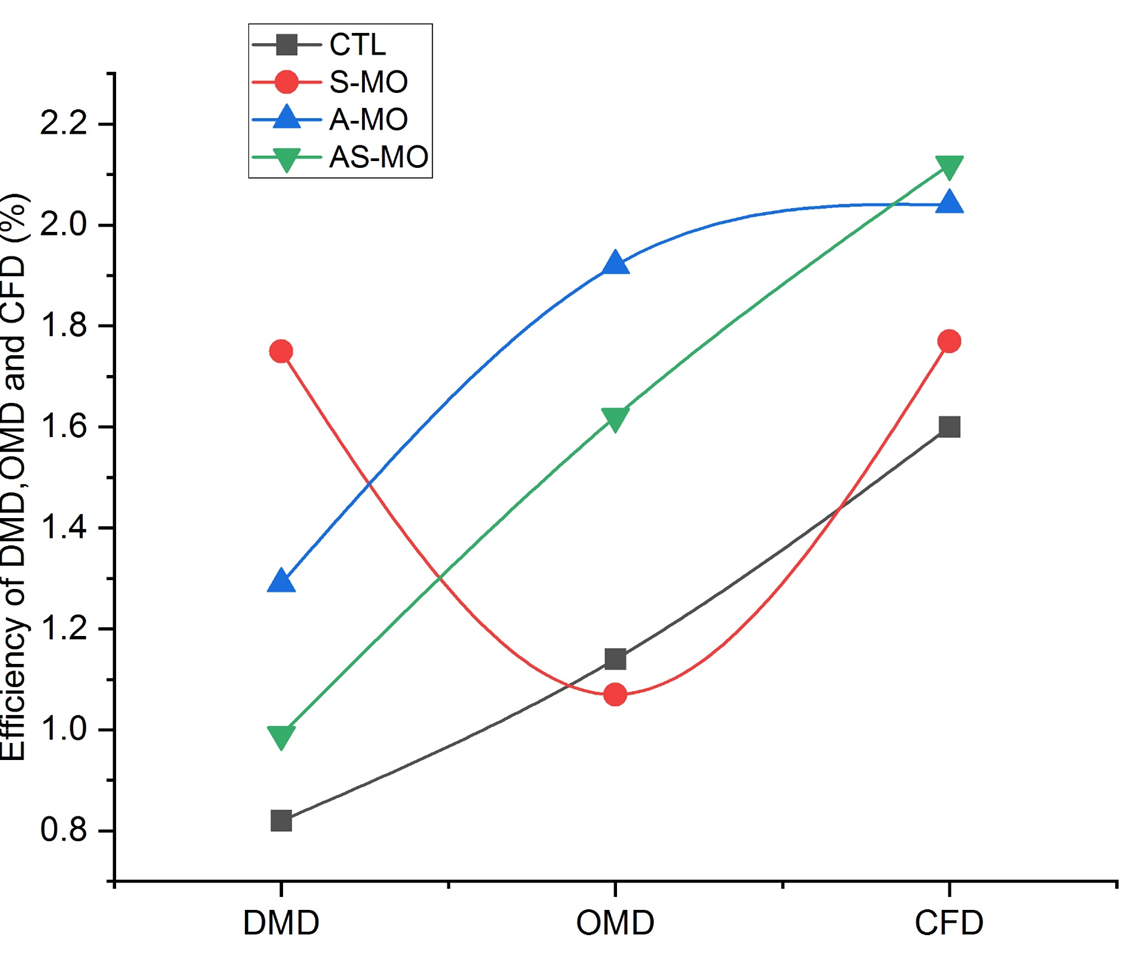Exploring the Potential of Herbal and Organic Minerals as Feed Additives for Beef Cattle Production
Abstract
An estimated global population of beef cattle is one billion, and when contrasted to swine and poultry, beef cattle have the lowest feed-to-meat conversion rates. Yet, these estimates need to consider beef cattle's ability to provide great-quality protein from sources which may be improper for other livestock species. Critical approaches to raising beef cattle's productivity include feed shape and composition, host genetics, the functionality of the rumen and respiratory microbes, and operational and breeding control. The aim of this research was to observe the impacts of adding Sapindus rarak (SR), powdered garlic, and their combinations to feed for beef cattle that had been supplemented with organic minerals of Cr and Zn on feed consumption, digestion, effectiveness, and performance, as well as expected growth. In the study, 16 male Brahman cross cows were used, and their diets were accompanied by 250 ppm SR powder, 250 ppm garlic powder, and 250 ppm SR-garlic fortified with Cr and Zn minerals. The outcomes presented that adding SR, garlic, and enhanced organic minerals to the diet increased feed efficiency, daily improvement, and the intake of dry and organic matter while reducing the number of rumen bacteria and protozoans. The researchers found that the best strategy to boost daily growth and feed efficiency was to add 250 ppm of organic minerals Cr-Zn and garlic powder to the beef cattle diet.
References
Terry, S.A., Basarab, J.A., Guan, L.L. and McAllister, T.A., 2020. Strategies to improve the efficiency of beef cattle production. Canadian Journal of Animal Science, 101(1), pp.1-19.
Lynch, J., 2019. Availability of disaggregated greenhouse gas emissions from beef cattle production: A systematic review. Environmental impact assessment review, 76, pp.69-78.
Rotz, C.A., Asem-Hiablie, S., Place, S. and Thoma, G., 2019. Environmental footprints of beef cattle production in the United States. Agricultural systems, 169, pp.1-13.
Palhares, J.C.P., Morelli, M. and Novelli, T.I., 2021. The water footprint of a tropical beef cattle production system: The impact of individual-animal and feed management. Advances in Water Resources, 149, p.103853.
Ayalew, H., Zhang, H., Wang, J., Wu, S., Qiu, K., Qi, G., Tekeste, A., Wassie, T. and Chanie, D., 2022. Potential feed additives as antibiotic alternatives in broiler production. Frontiers in Veterinary Science, 9.
Chen, Z., An, C., Fang, H., Zhang, Y., Zhou, Z., Zhou, Y. and Zhao, S., 2020. Assessment of regional greenhouse gas emission from beef cattle production: a case study of Saskatchewan in Canada. Journal of environmental management, 264, p.110443.
Hubbart, J.A., Blake, N., Holásková, I., Mata Padrino, D., Walker, M. and Wilson, M., 2023. Challenges in Sustainable Beef Cattle Production: A Subset of Needed Advancements. Challenges, 14(1), p.14.
Hundal, J.S., Wadhwa, M.A.N.J.U., Singh, J.A.S.W.I.N.D.E.R., Dhanoa, J.K. and Kaur, H.A.N.E.E.T., 2020. The potential of Citrullus colocynthis as an herbal feed additive for ruminants. Indian Journal of Animal Sciences, 90(2), pp.244-248.
Nantapo, C.W.T. and Marume, U., 2022. Exploring the potential of Myrothamnus flabellifolius Welw. (resurrection tree) as a phytogenic feed additive in animal nutrition. Animals, 12(15), p.1973.
Honan, M., Feng, X., Tricarico, J.M. and Kebreab, E., 2021. Feed additives as a strategic approach to reducing enteric methane production in cattle: modes of action, effectiveness, and safety. Animal Production Science.
Cardoso, A.D.S., Barbero, R.P., Romanzini, E.P., Teobaldo, R.W., Ongaratto, F., Fernandes, M.H.M.D.R., Ruggieri, A.C. and Reis, R.A., 2020. Intensification: A key strategy to achieve sustainability of animal and environmental beef cattle production in Brachiaria grasslands. Sustainability, 12(16), p.6656.
Dick, M., da Silva, M.A., da Silva, R.R.F., Ferreira, O.G.L., de Souza Maia, M., de Lima, S.F., de Paiva Neto, V.B. and Dewes, H., 2021. Environmental impacts of Brazilian beef cattle production in the Amazon, Cerrado, Pampa, and Pantanal biomes. Journal of Cleaner Production, 311, p.127750.







